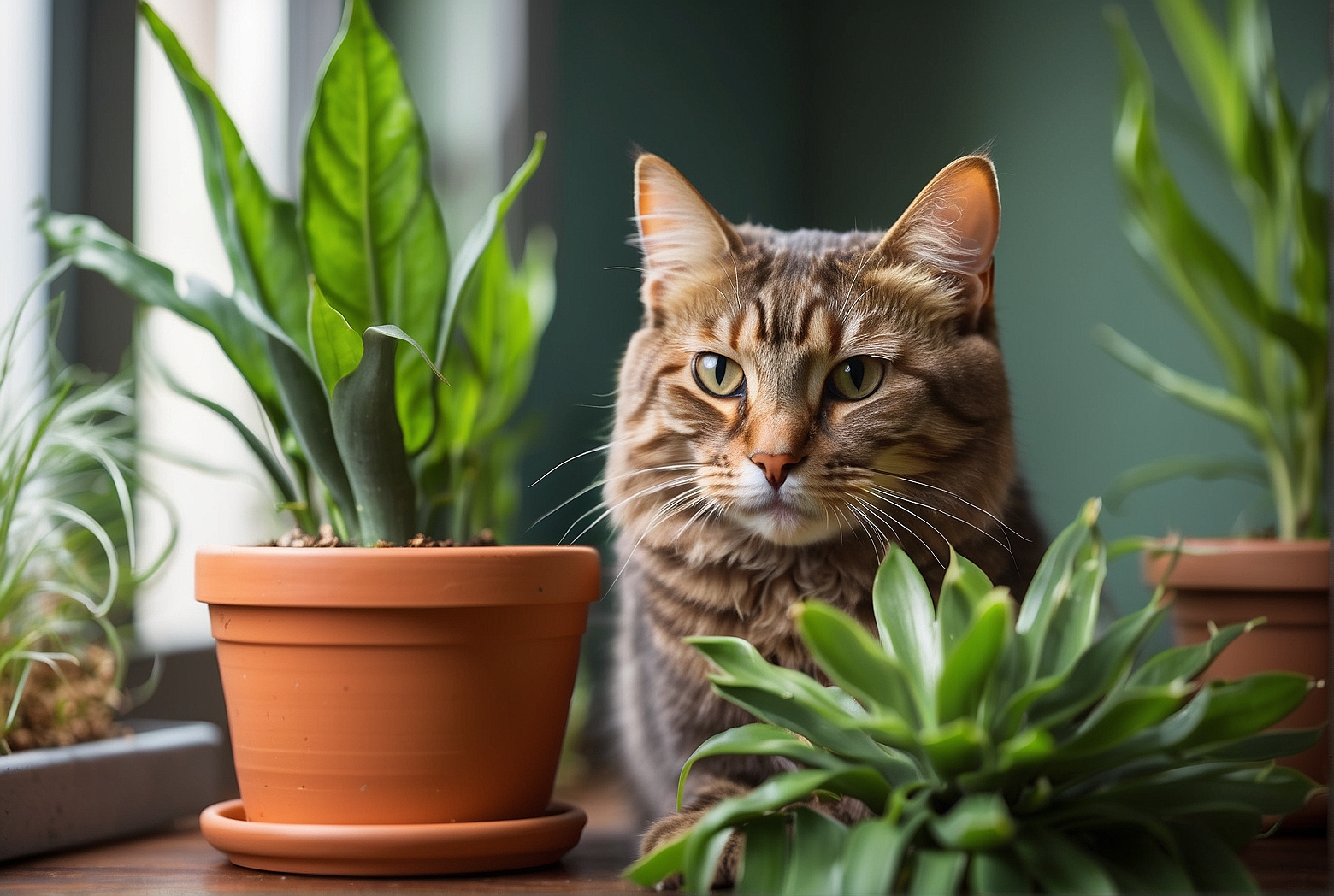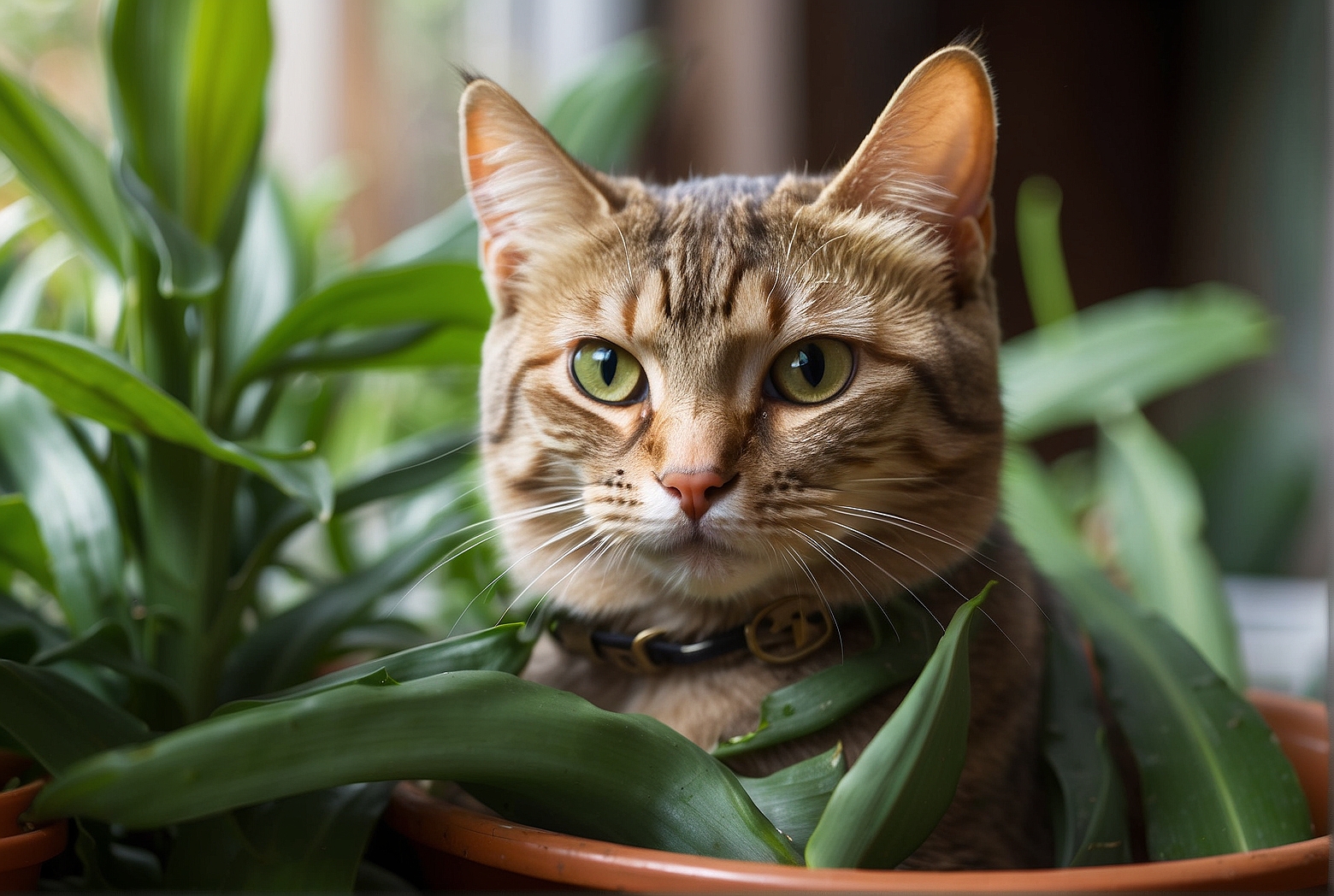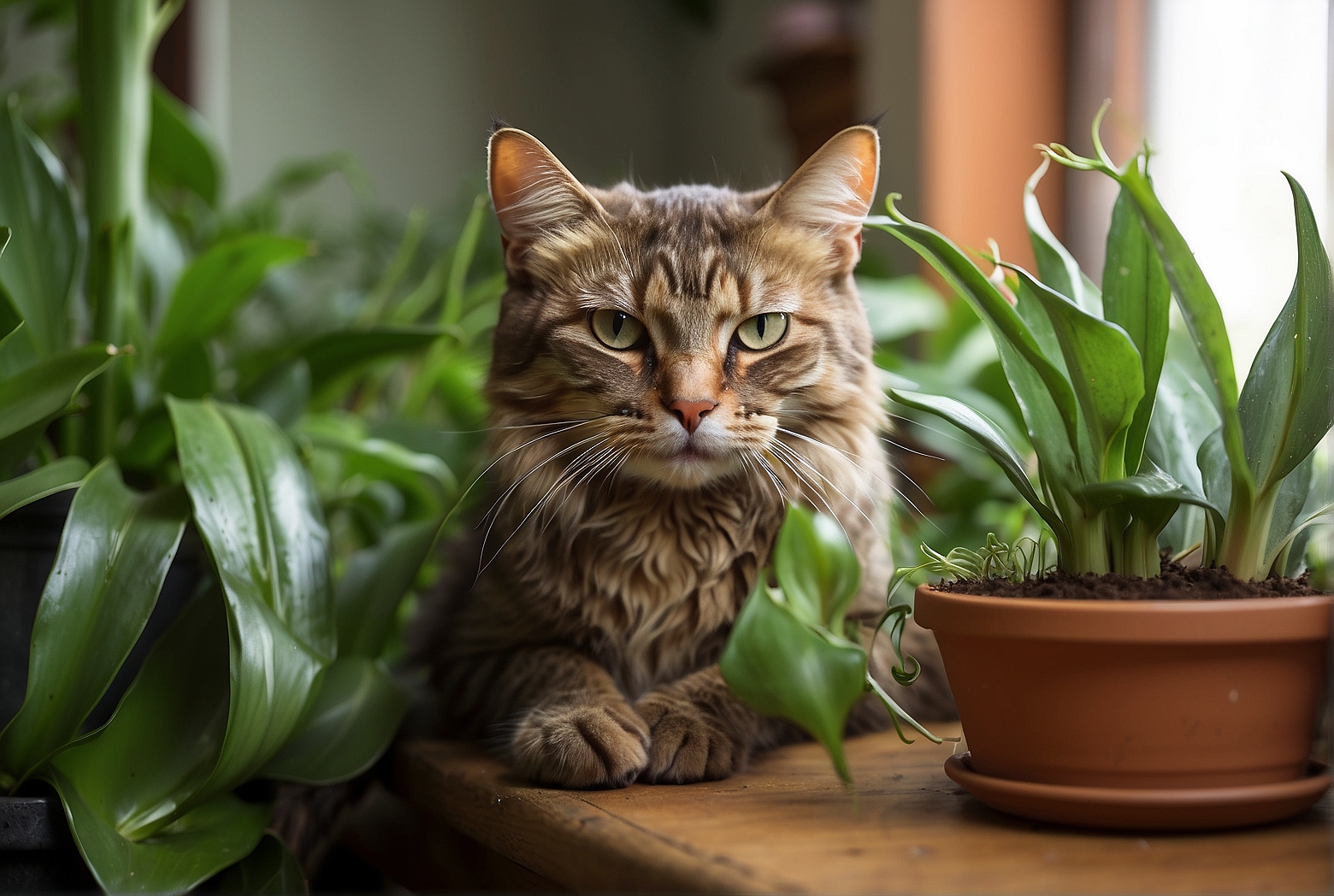Last Updated on April 17, 2024 by Tony Manhart
If you’ve ever caught your curious feline joyfully licking your snake plant, you may have wondered, “Is it actually safe for cats to do that?” We all know that cats can be finicky eaters, prone to exploring the world through their taste buds. However, when it comes to certain plants, their inquisitive nature might just lead them into trouble. In this article, we’ll explore the potential consequences and safety implications of cats indulging in a lick or two of a snake plant.
Introduction
Welcome to this article, where we will be exploring the intriguing topic of snake plants and their potential toxicity to our feline friends. As cat owners, we always strive to provide a safe and healthy environment for our beloved pets, and understanding the risks associated with certain plants is essential. Throughout this comprehensive guide, we will delve into the nature of snake plants, their effects on cats, and provide valuable precautions to ensure the well-being of both our feline companions and our cherished greenery.
What is a snake plant?
Also known by the scientific name Sansevieria, snake plants are popular houseplants appreciated for their striking appearance and air-purifying properties. These plants feature long, sword-shaped leaves that typically grow upright, resembling the scales of a snake. They are native to tropical regions of West Africa and are well-adapted to indoor environments, making them a common choice among plant enthusiasts.
Are snake plants toxic to cats?
While snake plants offer various benefits to humans, they have gained attention for their potential toxicity to cats. Extensive research has been conducted to better understand the effects of snake plant ingestion on feline health. Multiple studies have shown that this plant contains compounds that can pose a danger to our feline friends, particularly when ingested in larger quantities.

Why do cats lick plants?
Before delving into the potential risks associated with cats licking snake plants, it is essential to explore the behavior itself. Cats are known for their curious nature, and their penchant for exploring their surroundings often extends to plants. Licking, pawing, and nibbling on foliage is not uncommon among felines. While the exact reasons behind this behavior may vary from cat to cat, several theories explain why they may be drawn to plants.
One theory suggests that cats may be instinctively trying to obtain nutrients that are missing from their diet. Another theory posits that this behavior may serve as a form of entertainment or sensory stimulation for cats. Additionally, some experts believe that cats engage in plant licking due to their natural inclination to groom and investigate objects in their environment.
Potential risks of cats licking snake plants
While cats’ curiosity can lead them to explore plants, it is crucial to be aware of the potential dangers they may face, specifically when it comes to snake plants. Consuming significant amounts of snake plant foliage can result in harmful effects on a cat’s health. Let’s take a closer look at some of the potential risks associated with cats licking snake plants.
Overview of potential dangers
Snake plants contain toxic compounds, primarily saponins, which can be harmful to cats when ingested. These compounds are responsible for the plant’s bitter taste and toxic properties. When cats come into contact with snake plants, the saponins can cause various health issues, depending on the quantity ingested and the individual cat’s sensitivity.

Effects of ingestion
Ingesting snake plant foliage may lead to gastrointestinal disturbances in cats. Common symptoms include drooling, vomiting, and diarrhea. In severe cases, ingestion of significant quantities may result in more severe symptoms such as tremors, seizures, and even liver damage. It is crucial to monitor cats closely if they have come into contact with snake plants and seek veterinary assistance if any concerning symptoms arise.
Allergic reactions
In addition to the toxic compounds, some cats may also exhibit allergic reactions to snake plants. Allergic reactions can manifest as skin irritations, such as itching, redness, and rashes. These reactions can be uncomfortable for the cat and may require medical attention to alleviate the symptoms.
Precautions to protect cats and snake plants
To ensure the safety and well-being of both our feline companions and our beloved snake plants, several precautions can be taken to minimize the risks associated with their interaction. Let’s explore some effective ways to protect cats and snake plants in your home.
Preventing access to snake plants
One of the most straightforward precautions is to keep snake plants out of a cat’s reach. Placing plants in elevated areas or using hanging planters can help prevent cats from accessing them. Additionally, creating physical barriers or using pet gates can be effective in restricting access to certain areas where snake plants are displayed.
Creating alternative safe plants for cats
Providing cats with alternative, cat-friendly plants can redirect their attention away from snake plants, reducing the risk of ingestion. Catnip, cat grass, and spider plants are popular choices that cats may enjoy interacting with. These plants not only provide mental and physical stimulation for cats but are also non-toxic and safe for their consumption.
Utilizing deterrents and training
Certain deterrents can be employed to discourage cats from approaching snake plants. Bitter-tasting sprays or natural deterrents like citrus scents can be applied to the foliage to make them less appealing to cats. Additionally, training cats to avoid certain plants through positive reinforcement techniques can help establish boundaries and reduce the likelihood of unwanted interaction.
What to do if a cat licks a snake plant?
In the event that a cat does come into contact with a snake plant and exhibits signs of ingestion, it is essential to take immediate action to ensure their well-being.
Immediate steps to take
If you witness your cat licking a snake plant, it is crucial to remove them from the vicinity of the plant to prevent further ingestion. Wipe their mouth with a clean cloth to remove any remaining plant matter, reducing the potential for continued exposure.
Contacting a veterinarian
After removing the cat from the plant and cleaning their mouth, it is strongly recommended to contact a veterinarian. They will be able to provide guidance and assess the situation based on your cat’s specific symptoms and circumstances.
Monitoring and observation
Following the veterinarian’s advice, it is important to closely monitor your cat for any changes in behavior or the development of symptoms. Keep a record of any observations and be prepared to provide this information during follow-up consultations with the veterinarian.
Are snake plants safe for cats if kept out of reach?
When snake plants are kept in areas inaccessible to cats, such as elevated shelves or hanging planters, they pose minimal risks. In such scenarios, snake plants can coexist safely with cats, allowing owners to enjoy the benefits of these elegant houseplants without compromising their feline companions’ well-being.
Exploring the safety of snake plants when inaccessible to cats
Cats are generally unlikely to suffer from snake plant toxicity if they cannot physically access the plant. However, it is essential to remain attentive and regularly monitor the placement of plants to ensure they remain securely out of reach.
Benefits of having snake plants in a cat-friendly environment
Snake plants offer various benefits in a cat-friendly environment. Their air-purifying properties can help improve indoor air quality, benefiting both humans and animals. Additionally, their presence adds natural beauty to the space and contributes to a calming ambiance, positively impacting the overall well-being of both cats and their owners.
Safe and non-toxic alternatives to snake plants
For cat owners who prefer to completely eliminate any potential risk, several safe and non-toxic alternatives to snake plants exist, providing an ideal compromise between plant ownership and cat welfare.
Plants that are safe for cats to interact with
Cat-safe plants, such as Boston ferns, spider plants, and areca palms, can serve as excellent alternatives to snake plants. Not only are these plants non-toxic to cats, but they can also thrive in indoor environments, showcasing vibrant foliage and enhancing the aesthetic appeal of any living space.
Benefits of these alternative plants
Opting for cat-safe plants provides peace of mind, allowing cats to freely explore their surroundings without the worry of toxic interactions with plants. These alternatives offer similar benefits, such as air purifying properties and an inviting atmosphere, while catering to the specific needs and safety concerns of cat owners.
Conclusion
In conclusion, it is important to be aware of the potential risks posed by snake plants when it comes to our feline companions. While snake plants can add beauty and freshness to our homes, they contain compounds that are toxic to cats when ingested. By taking necessary precautions, such as preventing access to snake plants, providing alternative safe plants for cats, and utilizing deterrents and training, we can create a harmonious and safe environment for both our cherished pets and our beloved houseplants. Remember, if a cat does come into contact with a snake plant, it is essential to take immediate action and consult with a veterinarian to ensure your pet’s well-being. With the right knowledge and precautions, we can enjoy the benefits of snake plants while ensuring the safety of our furry friends.
Tony Manhart is a passionate gardener who has been tending to gardens for over 20 years. He takes pride in creating beautiful outdoor spaces with plants, trees, and shrubs that can thrive in any environment. He loves to share his knowledge with others and has taught classes on gardening basics and advanced techniques. He is committed to sustainability, using natural and organic methods to create and maintain gardens. He also works with local organizations to create green spaces for communities. When he’s not gardening, Tony enjoys hiking, reading, and spending time with his family.


